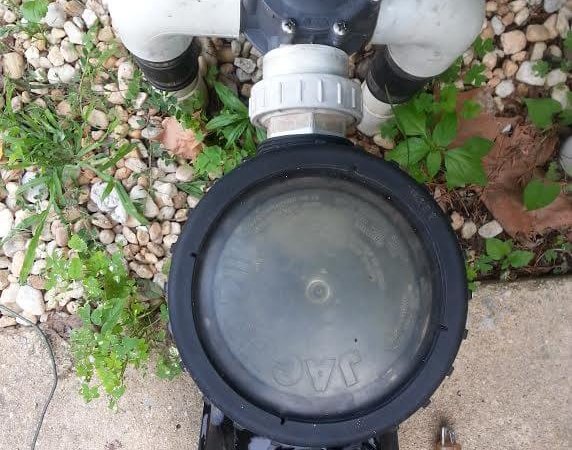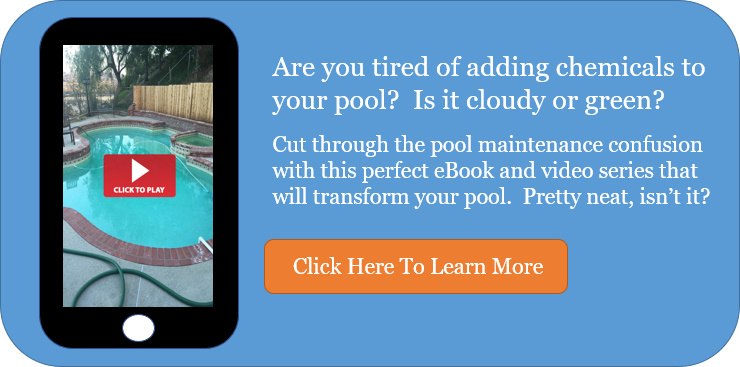- Home
- Maintenance
- How To Prime A Pool Pump
Prime A Pool Pump Step-By-Step Guide
If you're reading this, you might be wondering how to prime your pool pump. You maintain your pool perfectly. You balance the water, sweep, brush, and vacuum the pool when needed. But something is going on with the pump motor. It doesn't want to prime.
A pump that's not priming can be a source of frustration for a pool owner, and it can cause damage to your pump motor if it's not addressed. There are many things that can happen to keep your pool pump from priming. Fortunately, there are things you can do to avoid costly repairs and have a perfect pool all swimming season.

Why Should I Prime My Pool Pump?
The functions of a pool pump are pretty easy. An impeller inside the pump housing spins and draws water from the skimmer(s) and bottom drain(s) to the pump motor via the plumbing. It's this action that causes the pool pump to prime, but sometimes your pool pump needs a little help due to a variety of reasons.
Your pool pump was designed to pull water from your pool and it only works when this action takes place. If the pump pot is not full of water, the pump motor can be damaged.
What Is Priming A Pool Pump?
Priming a pool pump could be one of two things: the pump does it itself as in the case of a self-priming pump motor, or the pool owner manually primes the pump by adding water to the pump pot via a garden hose or a bucket of water. Many inground pool pump motors need to be manually primed.
How To Prime A Pool Pump
Although priming a pool pump is straight forward, please use caution and common sense when dealing with your filter system. It's under tremendous pressure and could cause personal injury or system damage if the proper steps are not taken.
1. Turn The Muliport Valve to Recirculate
Make sure your pool pump is off and turn the multiport valve to recirculate. This will bypass the filter and allow for more suction from the skimmer and drain. You can also bleed the air out of the system using your air relief valve on your filter once the system is running.
2. Remove The Pump Pot Lid
Next is to remove the pump pot lid and discard any debris in the pump basket. Fill the pot with water from a garden hose or a large bucket with water. You're going to want to run the hose long enough to completely fill the pump pot. Some air may have worked its way into the plumbing, so you'll want to over-compensate for that.
3. Turn The Pump Motor On
Put the lid back on the pump pot, tighten it down, and turn the pump motor on. You need to be a little quick during this step. Water can escape back through the suction side. It might take a moment or two, but eventually the water will catch up and the pump pot will be full of water.
4. Bleed The Air Out Of The Filter
Once the water is nicely flowing in the pump pot, bleed the air out of your filter. This will remove any excess air in the system.
5. Turn The Pump Motor Off
We don't want to keep our multiport valve on recirculate all the time, right? So now we're going to turn the pump motor off, turn our multiport valve back to filter, then turn our pump motor back on. You can bleed the filter of air once again if you wish. Give yourself a pat on the back. You're finished and did a great job!!
What If I Have A Cartridge Filter?
You'll follow the same procedures, minus one detail. Cartridge filters don't have multiport valves, so there's no valve to turn. Turn your pump motor off, fill the pump pot with water, replace the lid, turn the pump motor back on, and bleed the air out of the filter.
Pump Priming Troubleshooting Tips
Priming your pool pump might take a couple of tries. If the pool pump just won't prime, try these troubleshooting tips.
- Make sure the pool is filled 1/3 - 1/2 up from the bottom of the skimmer.
- Make sure the skimmer weir is properly working. A stuck skimmer weir can restrict water in the skimmer.
- Check the pump pot lid and O-ring and secure if needed.
- Check for a leak in the suction side.
- Filter is filled with air.
- Pump impeller is clogged with debris.
- Pump pot not filled with water.
- Check for leaks all around the pump pot and pump motor.
- Skimmer is clogged or blocked.
- Skimmer basket is filled with debris.
- Bottom drain is clogged or blocked.
- Skimmer valve is closed, or partially closed.
Become A Pool Pump Priming Pro
By following these steps, you should have your pump up and running in no time. If you've done your homework and have tried all of these suggestions and your pool pump still won't prime, it might be time to call in an expert pool tech.
Don’t give up on the first try. It might take a few times to get your pool pump to prime, but you can do it!!
